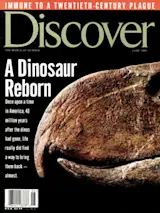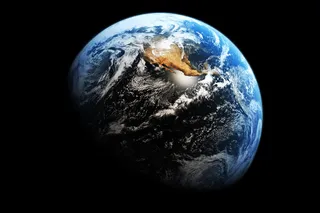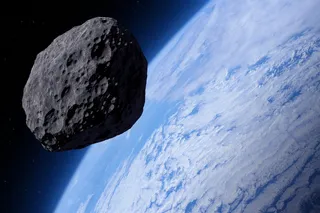On January 6, at 11 A.M. Eastern Standard Time, a huge bubble of hot magnetized gas burst from the sun. The bubble, in the form of a giant cloud, rushed toward Earth at some 900,000 miles per hour. By the time the cloud enveloped Earth four days later, it had expanded to a width of about 20 million miles. Despite its enormity, the cloud was by no means unusual. Every four months or so, magnetic disturbances on the sun give rise to similar space-faring clouds as well as solar flares and other phenomena. One such massive storm in 1989 knocked out a power grid in Quebec. Yet this particular cloud was unique in one respect: it was the first to be intercepted by a fleet of three NASA satellites that tracked its every move, from the first hint of strange happenings on the sun to the passage through space, over Earth, and beyond. Together they gave researchers their first coherent picture of how a magnetic cloud interacts with Earth’s magnetic field.
In our field we often use the blind men and the elephant analogy, where one person looks at the trunk, one looks at the ears, and so on, says Geoff Reeves, a physicist at Los Alamos National Laboratory. To extend that metaphor, the guys who study ears usually look at different elephants than the guys who study trunks. This time we were able to look at the trunk, ears, tail, and legs of the same elephant.
The SOHO satellite, from its vantage point some 900,000 miles from Earth, where it regularly watches the sun, was the first to see the big magnetic cloud tear loose from near the sun’s equator. Then, on January 10, three days and 18 1/2 hours after the eruption, the Wind satellite detected the cloud billowing past its position some 400,000 miles from Earth.
About half an hour after the cloud reached Wind, it engulfed Earth. Normally, Earth’s magnetosphere--the planet’s magnetic atmosphere- -extends about 40,000 miles from the planet in the direction of the sun. On the opposite side of the planet it trails off, like a wind sock, for some 800,000 miles before merging with the vast flow of particles from the sun known as the solar wind, which the Wind satellite monitors. The satellites found that the magnetic field in part of the cloud had the same orientation as Earth’s magnetic field. When this part reached Earth, the two magnetic fields naturally wanted to repel each another, just as the north poles, say, of any two magnets will push apart. As a result the cloud’s magnetic field scrunched up Earth’s field. For a few days Earth’s field, squeezed into a smaller volume, became about 20 percent stronger.
On January 10, the POLAR satellite, which orbits within Earth’s magnetosphere, measured that surge. The boost in strength accelerated electrons and other particles trapped in the field to energies more than 100 times greater than normal. Because our planet’s auroras arise from energetic particles traveling through the magnetic field and smacking into the atmosphere, those hyped-up particles made for spectacular northern and southern lights.
The storm may also have knocked out AT&T;’s $200 million Telstar 401 satellite. On January 11, when the energy in the radiation belts had grown most intense, Telstar 401 died, perhaps because electrons powered by the storm pierced the satellite and lodged in its circuits. We know that these conditions can cause problems for satellites, Reeves says, but unless we can go up with the space shuttle, bring the thing back, and look at it in the lab, we’ll never know exactly how it failed. (AT&T; would prefer that the storm wasn’t the cause: the satellite is insured against failure from normal operation but not against natural disasters.)
The magnetic cloud is now well past Earth, perhaps near Jupiter, and is probably starting to break apart, says Reeves. If it’s still intact, he notes, it won’t be for long. Soon it will merge with the pervasive flow of the solar wind. The storm will fade into the solar wind, says Reeves, like a drop of cream in a cup of coffee.














